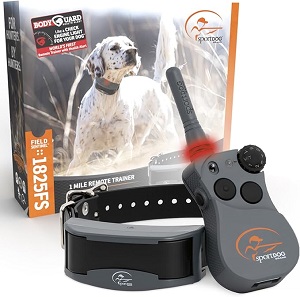
The Best Diets for Dogs: What Should You Feed Your Pet
A nutritious diet is the foundation of a dog’s health, just as it is for humans. However, the question of what to feed your pet can often leave owners overwhelmed, given the numerous choices in the market. From dry kibble to raw diets, each option claims to be the best for your dog's health. But the truth is, the best diet depends on your dog’s individual needs, which can be influenced by factors like age, breed, activity level, and any existing health conditions.
1. Understanding Your Dog’s Nutritional Needs
To choose the best diet, it’s essential to understand the basic nutritional needs of dogs. Canines require a balanced diet that includes protein, fats, carbohydrates, vitamins, minerals, and water. Each of these plays a vital role in maintaining your dog’s health.
1.1. Protein
Protein is the cornerstone of a dog’s diet and should be derived primarily from animal sources. Proteins are vital for muscle development, tissue repair, and overall energy. Common sources include chicken, beef, fish, and lamb. Dogs also benefit from plant-based proteins, though animal proteins are generally preferred due to better bioavailability.
1.2. Fats
Essentials for Your Newly Adopted Pet
Welcoming a shelter pet into your life is a beautiful journey. Here are some handpicked items to help your new friend feel safe, loved, and right at home:
Fats provide a concentrated source of energy and play a key role in supporting a healthy coat, skin, and brain function. Omega-3 and Omega-6 fatty acids, in particular, help reduce inflammation and keep your dog’s coat shiny and healthy. Fat sources in dog food typically come from meat, fish oils, and plant oils.
1.3. Carbohydrates
While carbohydrates are not essential for dogs, they can be an important energy source. Carbs provide fiber, which aids in digestion and maintains gut health. Quality carbohydrates include sweet potatoes, rice, and oats, though dogs can thrive on low-carb diets as well, provided their protein and fat needs are met.
1.4. Vitamins and Minerals
Dogs need a variety of vitamins and minerals to maintain optimal health. These nutrients support bone health, immune function, and metabolism. Vitamins such as A, D, E, and K are essential, as are minerals like calcium, phosphorus, and potassium.
1.5. Water
Water is often overlooked but is the most critical nutrient for your dog. It aids in digestion, regulates body temperature, and helps eliminate toxins. Always ensure your dog has access to fresh, clean water.
2. Types of Dog Diets
There are several types of diets available for dogs. Understanding the benefits and drawbacks of each can help you decide which option best suits your pet.
2.1. Dry Kibble
Dry kibble is the most common and convenient form of dog food. It’s formulated to meet a dog’s basic nutritional requirements and can be tailored to specific needs, such as size, age, and health conditions.
-
Pros:
- Easy to store and serve
- Available in various formulas for different breeds, ages, and medical conditions
- Helps maintain dental health by reducing plaque
-
Cons:
- Can be high in carbohydrates and fillers
- Some brands use low-quality ingredients or preservatives
When choosing kibble, look for high-quality brands that list animal protein as the first ingredient and avoid foods with excessive fillers or artificial additives.
2.2. Canned or Wet Food
Wet food, available in cans or pouches, contains a higher moisture content than dry kibble, making it more palatable and easier for some dogs to eat. Wet food often contains more real meat and fewer carbohydrates.
-
Pros:
- High moisture content helps with hydration
- Easier for dogs with dental problems to chew
- Often more appetizing for picky eaters
-
Cons:
- More expensive than dry kibble
- Can contribute to weight gain if portions are not controlled
- Spoils quickly once opened
Wet food can be a good option for senior dogs or those with dental issues, but always monitor portion sizes to avoid overfeeding.
2.3. Raw Diet (BARF)
The BARF (Biologically Appropriate Raw Food) diet consists of raw meat, bones, fruits, and vegetables. Advocates claim it’s more natural and better suited to a dog’s ancestral diet, while critics warn of potential health risks from bacterial contamination.
-
Pros:
- Highly digestible and often leads to shinier coats, cleaner teeth, and higher energy levels
- Free from artificial preservatives and fillers
-
Cons:
- Potential risk of bacteria like salmonella in raw meat
- Requires careful meal planning to ensure proper nutrition
- Can be more expensive and time-consuming to prepare
If considering a raw diet, consult your veterinarian to ensure your dog’s nutritional needs are fully met.
2.4. Homemade Diets
Some pet owners prefer to cook for their dogs at home, believing it offers more control over the ingredients and quality of the food. Homemade diets typically include cooked meat, vegetables, grains, and supplements.
-
Pros:
- Complete control over ingredients and preparation
- Can be tailored to address specific health issues or allergies
-
Cons:
- Difficult to balance all the necessary nutrients without professional guidance
- Time-consuming and more expensive than commercial dog food
- Risk of nutritional deficiencies if not properly formulated
Homemade diets can be beneficial, but it’s essential to work with a vet or pet nutritionist to ensure you’re providing a balanced diet.
2.5. Freeze-Dried and Dehydrated Diets
Freeze-dried or dehydrated foods offer the benefits of raw diets with the convenience of kibble. These diets typically consist of minimally processed ingredients that are freeze-dried or dehydrated to extend shelf life.
-
Pros:
- Nutrient-dense and minimally processed
- Convenient to store and serve
- Retains more nutrients compared to kibble
-
Cons:
- Expensive compared to other options
- Requires rehydration before serving
Freeze-dried or dehydrated food can be a good option for pet owners who want to offer raw or whole-food ingredients but with greater convenience.
3. Special Diets for Dogs with Health Conditions
Certain health conditions may require your dog to follow a special diet. Whether for managing allergies, weight, or chronic diseases, specialized dog foods can address these issues.
3.1. Weight Management
Obesity in dogs is a common health issue, leading to problems such as joint pain, heart disease, and diabetes. For dogs that need to lose weight, a low-calorie, high-fiber diet can help them shed pounds while still feeling full.
3.2. Food Allergies and Sensitivities
Food allergies or sensitivities can cause symptoms like itching, gastrointestinal upset, or ear infections. If your dog has food allergies, a limited-ingredient diet or hypoallergenic formula can help eliminate common allergens such as beef, dairy, chicken, or grains.
3.3. Senior Dog Diets
As dogs age, their nutritional needs change. Senior dog diets are formulated with lower calories to prevent weight gain, higher fiber to support digestion, and additional supplements like glucosamine and omega-3 fatty acids to support joint and cognitive health.
4. Choosing the Best Diet for Your Dog
With so many diet options, choosing the right one for your dog can feel overwhelming. Here are a few factors to consider:
4.1. Age, Breed, and Size
Puppies, adult dogs, and seniors have different nutritional needs. Large breed dogs, for instance, need diets that support joint health, while small breeds may require more calorie-dense foods due to their faster metabolisms. Breed-specific formulas can also be beneficial for addressing common health issues related to certain breeds.
4.2. Activity Level
Highly active dogs, such as working breeds, will require more calories and protein to sustain their energy levels. Conversely, less active dogs may need a diet lower in calories to avoid weight gain.
4.3. Allergies or Sensitivities
If your dog suffers from food allergies or intolerances, choosing a diet that eliminates specific allergens is crucial. Limited-ingredient diets and novel protein sources, such as duck or venison, can help minimize allergic reactions.
4.4. Consult Your Veterinarian
Your veterinarian is a key resource when determining the best diet for your dog. They can recommend specific brands, portion sizes, and even prescribe therapeutic diets if your dog has a medical condition that requires special nutrition.
Conclusion
The best diet for your dog depends on their individual needs, including age, size, activity level, and health conditions. Whether you opt for dry kibble, wet food, a raw diet, or homemade meals, it's crucial to ensure your dog is receiving a balanced and nutritious diet to support their overall well-being. Always consult with your veterinarian before making any significant changes to your dog’s diet, and make sure to monitor your pet's response to new foods.
By understanding your dog’s nutritional needs and carefully selecting the right diet, you can ensure your furry companion lives a long, healthy, and happy life.
Affiliate Products
We may earn a small commission when you shop through our links — it helps us keep sharing love and care for every dog out there, at no extra cost to you.
Up to 75% Discount

Dog Collar with Health Monitoring
BUY NOW »
Up to 55% Discount

Luxury Faux Furhuge Napping Bed
BUY NOW »

